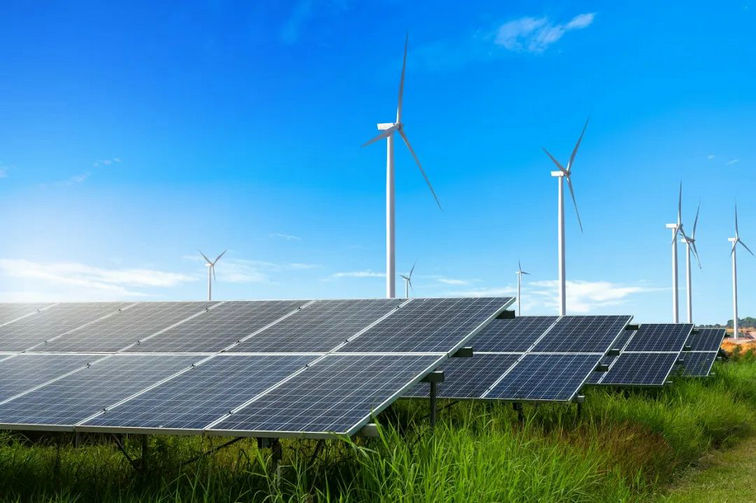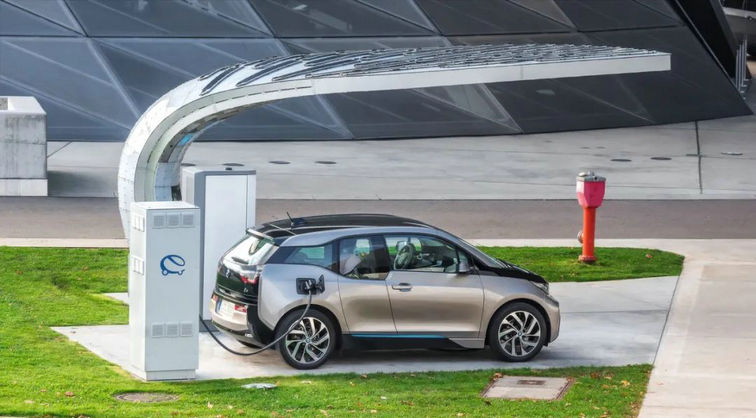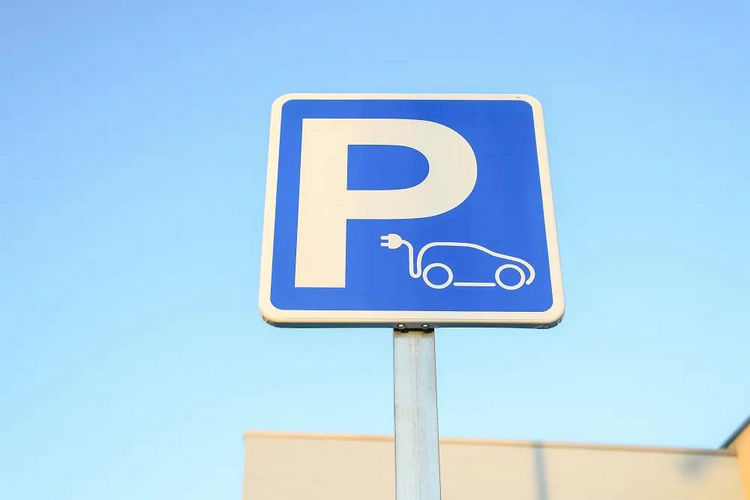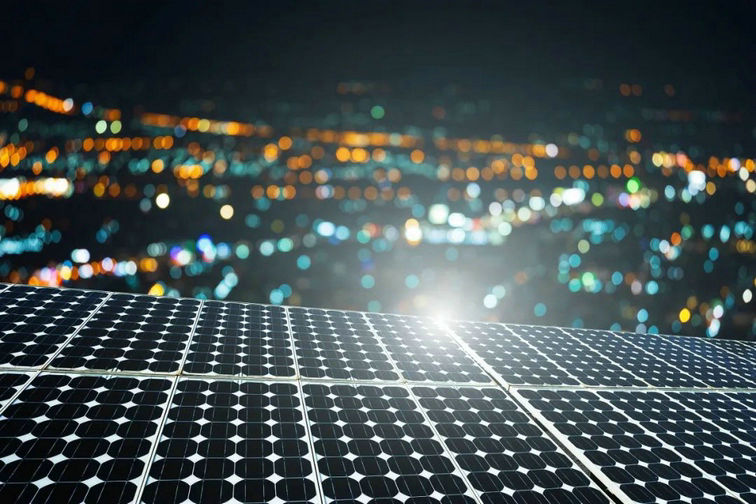| Why does the automobile industry focus on optical storage and charging? |
| Release time:2022-12-08 11:39:11| Viewed: |
Why does the automobile industry focus on optical storage and charging?
A few days ago, the "photovoltaic charging" energy station jointly operated by Sinopec Fujian Petroleum and Ningde Times was officially put into operation. It is reported that this mode has changed the oil sales mode with single function and replaced it with more intelligent, low-carbon and diversified comprehensive energy services. In fact, in the automotive industry, auto enterprises such as Tesla, power battery suppliers such as Ningde Times, and charging operators such as Telun, Xingxing and other upstream and downstream enterprises in the industrial chain have all been involved in the construction of optical storage and charging or "optical storage, charging, detection and discharge (charging)" integrated stations. The reporter of China Automobile News learned at the 2022 China International Optical Storage and Charging Industry Conference held from August 22 to 24 that the "optical storage and charging" track, which is highly favored by the industry, is in the stage of "darkness before dawn". At present, the construction of the integrated station also faces challenges in terms of cost, standard, security, commercialization, etc.
Under the goal of "double carbon" In the process of achieving the goal of "double carbon", the automobile, energy and electric power industries began to build a "golden triangle" to meet the test of the era of change. The formation of the "Golden Triangle" is by no means accidental, but inevitable under the background of the times. At present, the automobile industry is transforming from traditional fuel vehicles to new energy vehicles under the catalysis of the "new four modernizations"; The energy industry is transforming from traditional energy such as petrochemical to new energy such as wind, light and water; At the same time, the era of data based industrial Internet is coming. Today, the number of new energy vehicles in China has exceeded 10 million, and the industrial development has begun to take shape. According to the prediction of China Automobile Industry Association, the sales of new energy vehicles in China may reach 5.5 million this year, accounting for about 23.9%. According to the research of Huang Xueliang, a professor in the School of Electrical Engineering of Southeast University, in 2030, the number of new energy vehicles in China will reach 83 million, the equivalent energy storage capacity will reach 5 billion kWh, the vehicle charging demand will account for 6% to 7% of the social electricity consumption, and the maximum charging load will account for 11% to 12% of the grid load. Due to the fluctuation and uncertainty of renewable energy such as wind, light and water, when the power load changes from passive to active, the application of power generation side, grid side and user side is required to maintain the dynamic balance of power generation and consumption in all links. Energy storage has the bidirectional regulation capability of energy storage and release, which has become the rigid demand and standard configuration of new power systems. As a subdivision of the energy storage industry, the integrated development of optical storage, charging and other services for new energy vehicles is a profit model. With the continuous promotion of new energy vehicles, their functions will not be limited to manned and operation. In the future, the battery assets carried by new energy vehicles with considerable scale will play an important role in the entire power system, turning into miniature mobile energy storage systems. Zhou Fuqiu, a researcher at the Energy System Analysis and Research Center of the Energy Research Institute of the National Development and Reform Commission, believes that under the "dual carbon" goal, energy is the main battlefield and electricity is the main force. With the continuous and rapid increase of the proportion of new energy, the demand for regulation of the entire power system has increased dramatically. Comprehensive regulation capacity should be properly built in all links, and the source side, network side, storage side, etc. should be built appropriately in advance. The construction of the entire comprehensive regulation will be a long-term task.
It is imperative to build a new power system. Zhou Fuqiu said that the development of optical storage charging itself and its integration with other fields is to support the construction of a new power system. Specifically, it includes three aspects: improving the security and stability of the power supply chain, accelerating the green and low-carbon reform of the power industry, and improving the informatization level of the power industry.
Give play to the role of vehicle end "At present, the national power load is heavy, and there will be more energy consuming equipment in the future, especially after the wide popularization of new energy vehicles, the energy consumption will increase significantly, which requires photovoltaic and wind power generation. In addition to centralized wind farm stations, the country is also encouraging the construction of distributed photovoltaic." Wang Di, senior vice president of Wanbang Digital Energy Co., Ltd./CEO of Cloud BD, said in an interview that although the individual volume of distributed photovoltaic is small, if they can be consumed locally and produced for their own use, they can solve the energy consumption problem of some enterprises. When it is consumed by electric vehicles, these distributed generation resources can be stored, and then consumed, returned to the power grid or used by enterprises at appropriate times through self allocation energy storage or electric vehicle energy storage. " It is understood that the large-scale development of electric vehicles will enable them to have the advantages of energy based and power based energy storage, thus becoming one of the main forces of the "source network load storage" interaction under the background of the new power system. Electric vehicle energy storage will also be the largest distributed energy storage resource in the whole society. V2G will be the core technology to help electric vehicles play the role of distributed resources. It can meet the user's charging needs, and also provide peak shaving, frequency modulation and other grid auxiliary services, which is conducive to the consumption of new energy. The main advantages of new energy vehicles are: first, they have basic information from the very beginning of their development. They can not only participate in the energy interaction in the grid interaction, but also achieve information interaction; Secondly, the charging and changing infrastructure and application platform are still under development, which can be planned and constructed according to the direction suitable for interaction with the power grid. Huang Xueliang said in this regard: "Compared with other loads, electric vehicles have greater advantages in participating in the 'source network load storage' interaction of the grid. We should actively promote the interaction between electric vehicles and the grid, so that electric vehicles can truly become 'new energy vehicles'." At the same time, he also pointed out that the large-scale development of electric vehicles will go through four stages: disordered charging, passive orderly charging, active orderly charging and intelligent two-way charging and discharging. The greatest potential of interaction between new energy vehicles and the power grid lies in private cars. The optical storage, charging, replacement and inspection integrated station integrates five functions of renewable resource access, energy storage, electric vehicle charging and replacement, and electric vehicle testing services. In addition, it also has a comprehensive management system to achieve the coordination of the integrated station and optimize the operation so as to achieve economic efficiency. Cooperating with the distribution network, renewable resources, energy storage system, power exchange system, and charging facilities, it can form a micro grid intelligent scene, consume new energy, delay the expansion of the power grid, and achieve business models such as charging station construction, electric vehicle testing, and virtual power plant V2G. Tong Zongqi, director of the Information Department of the China Electric Vehicle Charging Infrastructure Promotion Alliance, said to reporters: "The object of the optical storage, charging, detection and release service is cars, and the key is that new energy vehicles really use new energy electricity. This goal can be achieved through photovoltaic, energy storage, charging, discharging, detection and power replacement, and the whole logic is reasonable."
Construction of demonstration station Tong Zongqi told reporters that at this stage, especially since last year, Beijing, Jiangsu, Shanghai, Yunnan, Hainan and other provinces and cities have begun to build optical storage charging integrated demonstration stations, which are promoted by local governments and actively participated by enterprises. Of course, at present, the optical storage charging integrated station is far from being widely promoted and applied to form a certain market scale, but at least we can see that the industry is developing technology and exploring business models.
In 2020, the New Energy Vehicle Industry Development Plan (2021-2035) issued by the General Office of the State Council clearly pointed out that the construction of "optical storage, charging and discharging" multi-functional integrated station is encouraged. In March 2022, the National Development and Reform Commission and the National Energy Administration issued the "Fourteenth Five Year" Modern Energy System Plan, proposing to promote the two-way interaction of energy and information between electric vehicles and the smart grid, and carry out the pilot demonstration of a new type of charging and changing electric field station combining "optical storage, charging and changing". The joint construction project of Sinopec Fujian Petroleum and Ningde Times mentioned above is a comprehensive energy service type energy station integrating photovoltaic power generation, rapid charging of new energy vehicles, battery testing, etc. The unique AI online battery detection technology in the station can realize battery risk early warning, and customers can learn about the use of vehicle batteries in a timely manner through the online monitoring report on the mobile phone. The reporter learned that at present, some people in the industry complain that the optical storage and charging integrated power station is not economical. Therefore, "cost reduction" has become the focus of attention. However, in the opinion of Xia Yanhui, Nanjing Research Institute of Sungrow Power Supply Co., Ltd., excessive efforts should not be spent on cost reduction. He said: "In the next three to five years, this field will usher in explosive growth. Through the industry's expectation of the number of electric vehicles, we can recognize the development potential of the optical storage and charging integrated power station. In the absence of economic benefits, enterprises should devote more energy and time to the research of key technologies, especially in the economic optimal operation of the integrated power station." It is reported that the core equipment of the integrated optical storage and charging power station of Sungrow Power is produced by itself. Wang Di mentioned that to improve the industrial ecology, it is necessary to establish a broad cloud platform to organize and mobilize various social resources, including the realization of electricity marketization.
However, Tong Zongqi also stressed that the new energy vehicle charging and changing market still has a very large growth space, during which there will be different segments. Therefore, the mode suitable for the optical storage, charging, releasing and inspection integrated station can be explored according to different scenes, but it is not applicable to all places.
Difficulties in many links According to the data shared by Xia Yanhui, with the increasing number of electric vehicles, it is estimated that the market capacity of integrated power stations will reach 10 billion kWh by 2025 and 100 billion kWh by 2030. However, the future technology development should take into account the problems such as vehicle drive system detection, power exchange standardization, and battery exchange of different models. It also needs to open up business models such as distribution network collaboration, smart micro grid, and virtual power plant, so as to realize the consumption of remote green power and the transaction of green certificates and carbon certificates. Xia Yanhui pointed out that the current problem of the optical storage and charging integrated power station is mainly in the detection: "There are great technical barriers in battery detection, including lack of standards, limited scope of application and data sources." "At present, the optical storage and charging integrated power station is in the 'dark before dawn' stage, which requires the whole industry to work together to improve the new energy absorption capacity and help achieve the 'dual carbon' goal." Xia Yanhui said.
Jiang Weiliang, the general manager of the Energy Storage Business Department of Shenzhen Yongtai Digital Energy Technology Co., Ltd., mentioned that in the three aspects of optical storage and charging, photovoltaic and charging piles developed earlier, from providing subsidies to declining subsidies, and the degree of marketization was more perfect. However, energy storage is still in the process of transition from the initial stage of commercialization to large-scale application. In addition to safety, cost and other issues, the most important thing for the sustainable and healthy development of energy storage is the design of the upper mechanism, which needs to shift from policy driven to market driven. The current electricity market reform is a major benefit.
|












